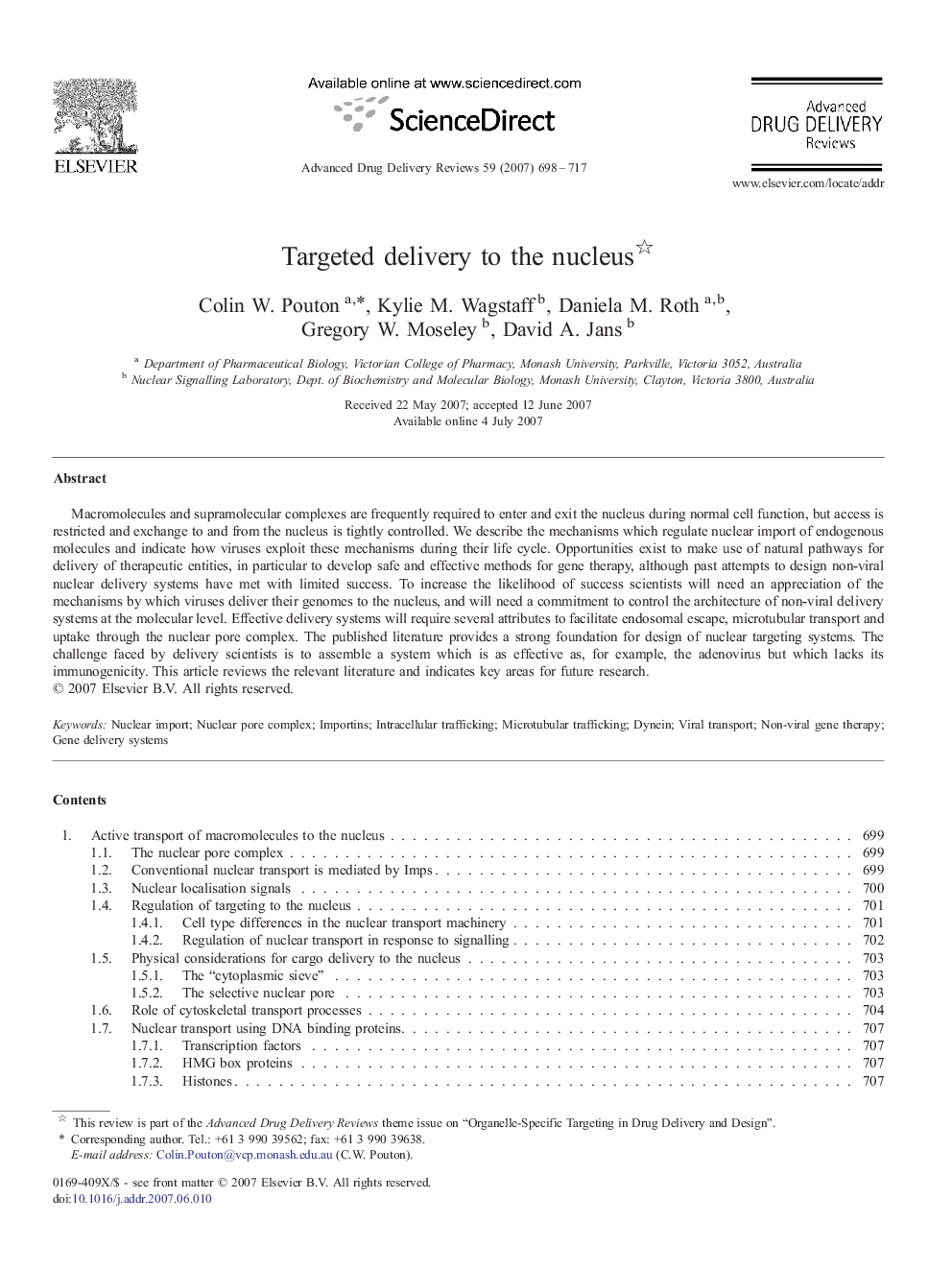| Article ID | Journal | Published Year | Pages | File Type |
|---|---|---|---|---|
| 2072315 | Advanced Drug Delivery Reviews | 2007 | 20 Pages |
Macromolecules and supramolecular complexes are frequently required to enter and exit the nucleus during normal cell function, but access is restricted and exchange to and from the nucleus is tightly controlled. We describe the mechanisms which regulate nuclear import of endogenous molecules and indicate how viruses exploit these mechanisms during their life cycle. Opportunities exist to make use of natural pathways for delivery of therapeutic entities, in particular to develop safe and effective methods for gene therapy, although past attempts to design non-viral nuclear delivery systems have met with limited success. To increase the likelihood of success scientists will need an appreciation of the mechanisms by which viruses deliver their genomes to the nucleus, and will need a commitment to control the architecture of non-viral delivery systems at the molecular level. Effective delivery systems will require several attributes to facilitate endosomal escape, microtubular transport and uptake through the nuclear pore complex. The published literature provides a strong foundation for design of nuclear targeting systems. The challenge faced by delivery scientists is to assemble a system which is as effective as, for example, the adenovirus but which lacks its immunogenicity. This article reviews the relevant literature and indicates key areas for future research.
